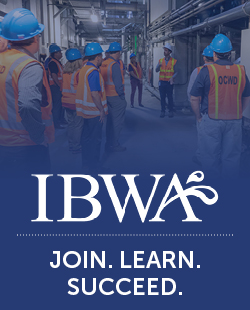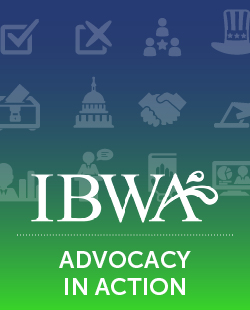INTERNATIONAL BOTTLED WATER ASSOCIATION (IBWA)
Communications Backgrounder: Perchlorate
December 2, 2004
Background
The U.S. Food and Drug Administration (FDA) regulates bottled water as a packaged food product and on November 26, 2004 posted results of a study, “Exploratory Data on Perchlorate in Food,” which reported results of a survey of bottled water, milk and lettuce samples to determine perchlorate levels, if any, that may be found in these products.
Of 51 samples of bottled water collected from retail outlets across the United States, only two samples contained any detectable level of perchlorate. However, these detected levels were below one (1) part per billion (ppb) and FDA and other expert opinion indicate that trace or low perchlorate levels in water and foods do not pose a health risk.
Therefore, consumers can remain secure about the safety of bottled water and feel comfortable in choosing bottled water as their beverage of choice. Currently, neither FDA nor the Environmental Protection Agency (EPA), which regulates community water systems, have a perchlorate standard and FDA has stated that if EPA sets a perchlorate standard for public water systems, it will establish a Standard of Quality (SOQ) for perchlorate in bottled water.
Communications Points
-
- FDA tested bottled water and other foods for perchlorate to increase the agency’s understanding of the presence and levels of perchlorate in food. FDA reported, “Results of 51 bottled water samples show non-quantifiable levels of perchlorate in 49 samples.” FDA found trace quantities of perchlorate — less than one (1) part-per-billion (ppb) — in only two of 51 brands tested. Survey results can be viewed online at www.cfsan.fda.gov/~dms/clo-4data.html. A “Perchlorate Question and Answers” document can also be viewed on the FDA web site at www.cfsan.fda.gov/~dms/clo4qa.html.
-
- None of the brands tested by FDA in this latest round had perchlorate levels above 0.56 ppb (about one-half of one ppb), less than even the lowest states’ (Massachusetts and Maryland) perchlorate reporting requirement of one (1) ppb.
-
- FDA has stated that [based on food survey results], “…it does not recommend at this time that consumers should alter their infant’s or children’s eating habits to avoid exposure to perchlorate.” FDA also said that, “Consumers should not view the perchlorate levels as an indicator of perchlorate exposure or as a “risk” of [consuming] certain foods.”
-
- IBWA supports the development and adoption of science and technology that protect the public health and helps ensure bottled water safety. Further, IBWA supports ongoing research to establish a science-based understanding of affects of perchlorate ingestion on humans and supports initiatives and measures based on sound science to protect human health.
-
- In order to arrive at a science-based conclusion as to the potential for health risks associated with perchlorate ingestion, the National Academy of Sciences (NAS) has convened a Committee to Assess the Health Implications of Perchlorate Ingestion (project ID Number BEST-K-03-05-A). At this time, the NAS study is ongoing and results are expected to be reported in January 2005.
-
- In advance of an NAS determination and hard science to determine the safety of perchlorate, some states have established rules for a range of perchlorate permitted in drinking water.
-
- For instance, the California Office of Environmental Health Hazard Assessment (OEHHA), in March 2004, established a public health goal (PHG) of six (6) ppb for perchlorate, which demonstrates that the levels detected by FDA should not concern consumers as the State of California is widely considered to be conservatively stringent in its setting of standards. California also has a draft perchlorate standard of six (6) ppb, which is currently undergoing regulatory review.
-
- Still other states, in advance of findings from NAS or EPA/FDA rulemaking, have adopted action and reporting levels for perchlorate in public water systems, which range from one (1) ppb (Massachusetts and Maryland) to 18 ppb (Nevada). This demonstrates the wide range of perspectives on the health effects of perchlorate and the lack of certainty as to an appropriate standard.
-
- While it is still premature to judge the safety of perchlorate, members of the International Bottled Water Association (IBWA) have been at the forefront of this issue and they have voluntarily tested their products for perchlorate testing using current accepted analytical methods and did not result in detection of the substance using current approved analytical methods.
-
- However, FDA and Massachusetts, in particular, have utilized a new, ultra-sensitive method to analyze perchlorate in water. To help prepare for new science and technologies that may become more widely available, IBWA is closely tracking the scientific evaluation of perchlorate by federal and state agencies and has urged its members to conduct additional rounds of testing using these recently developed, but still unapproved, analytical methods. See “A Discussion of Analytical Testing Methods,” below for more information on testing methods.
A Discussion of Analytical Testing Methods
-
- FDA’s recent testing of bottled water and other foods for the presence of perchlorate used a newly developed, rapid, sensitive specific ion chromatography-tandem mass spectrometry analytical method (IC-MS/MS) that can detect perchlorate at 0.5 ppb (one-half of one ppb) in bottled water, a previously immeasurable level. For more information on IC-MS/MS, visit the FDA web site at www.fda.gov.
-
- At this time, IC-MS/MS is not an analytical method used by FDA for perchlorate analysis. By regulatory mandate, FDA adopts EPA-approved testing methods for perchlorate and other matter. The current approved EPA detection methodology for perchlorate is Method 314, which has a reporting limit of four (4) ppb. This means that, using Method 314, laboratories cannot reliably detect perchlorate in water below one (1) ppb and, without special modifications, Method 314 cannot reliably detect perchlorate in water below four (4) ppb. The State of Massachusetts has mandated changes to Method 314 to achieve reporting limits of one (1) ppb.
-
- EPA is proposing additional, more sensitive methods for perchlorate detection, including IC-MS/MS, but these will not be accepted for any regulatory reporting in potable water before 2006 at the earliest.
-
- In 2000, as perchlorate became a topic of increasing concern because some public water systems and private wells demonstrated measurable perchlorate levels, EPA began testing public water systems, as well as bottled water, for perchlorate. As a result, EPA reported that it had not found perchlorate in any of the bottled waters contained perchlorate above five (5) ppb, the smallest amount their method could quantify in water. (Journal of Food and Agriculture, 80:1798-1804, “Survey of Bottled Waters for Perchlorate by Electrospray Ionization Mass Spectrometry (ESI-MS) and Ion Chromatography”). A survey by IBWA members, using the current approved detection Method 314, confirmed EPA’s results: perchlorate was not detected in the bottled waters tested.
Conclusion
This recent round of FDA testing for perchlorate in bottled water re-confirms the effectiveness of the comprehensive measures and practices that help ensure the consistent safety and quality of bottled water. Consumers with questions about a specific brand of bottled water should contact the company directly for information about their product.


